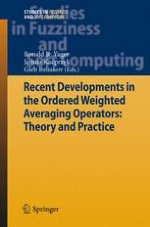This volume presents the state of the art of new developments, and some interesting and relevant applications of the OWA (ordered weighted averaging) operators. The OWA operators were introduced in the early 1980s by Ronald R. Yager as a conceptually and numerically simple, easily implementable, yet extremely powerful general aggregation operator. That simplicity, generality and implementability of the OWA operators, combined with their intuitive appeal, have triggered much research both in the foundations and extensions of the OWA operators, and in their applications to a wide variety of problems in various fields of science and technology.
Part I: Methods includes papers on theoretical foundations of OWA operators and their extensions. The papers in Part II: Applications show some more relevant applications of the OWA operators, mostly means, as powerful yet general aggregation operators. The application areas are exemplified by environmental modeling, social networks, image analysis, financial decision making and water resource management.
